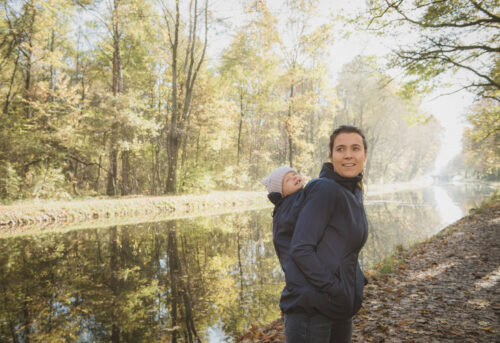As parents, we find ourselves responsible for treading a fine line between being honest about what is happening whilst ensuring that children (and we) can sleep at night.
The scale of the earth’s problems can seem overwhelming and a sense of helplessness can lead to us doing nothing. But activists, scientists and conservationists remind us that it is vital that we all take action to help save our planet. And that every small, positive step adds up to make a big, cumulative difference.
I believe we need to give children hope for their future: practical hope, where they are empowered to make a difference themselves. There are many ways we can do this. Here are some ideas:
Be informed as a parent
An important first step is to be informed ourselves – to understand the problems and solutions beyond the headlines. That can happen through reading books, news articles, magazines, reputable websites or watching television programmes. Developing an understanding enables parents to talk confidently and positively with children.
Help children become informed
Television programmes and charity websites often have child friendly content. And there are many wonderful books which can help us to talk with our children about the crisis our planet is facing. Visit Clare Helen Welsh’s fiction ‘Books that Help’ website (www.booksthathelp.co.uk) and click the section on environment. Or try these nonfiction books to explore with your children too:
- Red Alert by Catherine Barr and Anne Wilson. An interactive book, where your child chooses habitats or endangered creatures to explore in more detail, with practical ways we can help them survive.
- How to Help a Hedgehog and Protect a Polar Bear by Jess French and Angela Keoghan. A book filled with information about habitats and wildlife around the world and things we can do to help protect them.
- Old Enough to Save the Planet by Loll Kirby and Adelina Lirius. An inspiring book telling the stories of 12 real-life children and their work to help protect the natural world.
- Slow Down by Rachel Williams and Freya Hartas. This offers 50 stories about everyday nature which encourage children to pause and take a closer look.
- For more environmental and nature book recommendations, see Catherine Ward’s Instagram page: catherineward0
Spend time as a family in nature
The natural world can sometimes feel difficult to relate to,
especially if you live in an urban environment. Spending time in nature
allows children to experience it first-hand, which in turn will lead to
a desire to care for it. Whether it’s lifting flowerpots in the garden
to discover what lives underneath, walking in the woods or a city park
to spot wildlife or peering into rockpools at the beach, making a
connection with the natural world will encourage your child to want to
save it.
Make space for nature
While many endangered species can feel far away, there are lots of
ways that we can attract and protect nature close to home. From making
holes in fences so hedgehogs can forage freely for food, to hanging bird
feeders, to building a bug hotel, to planting insect friendly plants. If you provide a home or food source, wildlife will come.
Look at lifestyles
Once we start talking to our children about habitat loss and
endangered species, we can look at how our own lifestyles impact the
planet. From the food we buy to what we do with our waste, there are so
many practical steps we can take with our children to help the
environment. No positive action is too small to make a difference!
Find stories of hope:
There are many projects around the world to save and protect planet
earth. Sharing some of these with children helps them to feel part of a
positive, bigger picture.
The Emerald Forest is one such project. It is a story of
hope about the plight of orangutans in the rainforests of Sumatra, based
on a joint project by the World Wildlife Fund (WWF), the Frankfurt
Zoological Society (FZS) and The Orangutan Project. They manage 100,000
acres of forest bordering the Thirty Hills (Bukit Tigapuluh) National
Park and have a 60-year challenge to save one of the last great areas of
Sumatran rainforest. It is now one of the few wild places in the world
where orangutans, tigers and elephants coexist.
Having fun through crafts:
Another way to explain to children about endangered creatures and
habitat loss is through making crafts. We have two ways to make a cheeky
orangutan – see below.
*Catherine Ward’s latest book, The Emerald Forest, is published by Otter Barry Books in hardback, price £12.99. Suitable for children of 4+, it is set in tropical Sumatra, an island that has lost almost half its rainforest cover in recent years. It relates the story of an orangutan family and the destruction of their age-old home, but also shows how wildlife campaigners are bringing hope for the future. The text is accompanied by Karin Littlewood’s atmospheric illustrations.
Visit www.otterbarrybooks.com























